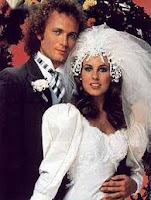My good friend once started giving me music clips from this band, The Avett Brothers. Since then, I have come to really love this band. Recently they have begun to take off, being recognized at the Grammys for their live performance there. While following them the last few years, I have really come to enjoy their music. I loved this song the first time I heard it and thought, why not see if I can watch it on Youtube? So here is how I found this extremely correlating music video to help out our discussion.
I chose this music video to share because, when you watch the video, it shows much of Jameson's ideas of Deterritorialization and Urbanism. It starts our with an open field, being bought and turned into a suburban neighborhood. Then it is bought out agin by large corporation and they build tall skyscrapers and buildings of business. It has a very New York/downtown Manhattan feeling to it. As time continues on, so do the people move on. The buildings soon become deserted and the town becomes desolate and crumbles down. Once the buildings are crumbling, they begin to disappear and are removed, taking us back to the open, empty field.
This songs use of Jameson's Urbanism shows the initial shift of rural to manufacture to business and office space, a use of social and political development. It's continual trasformation show stages of deterritorialization and land speculation. It is attempting to undo what has already been done.









